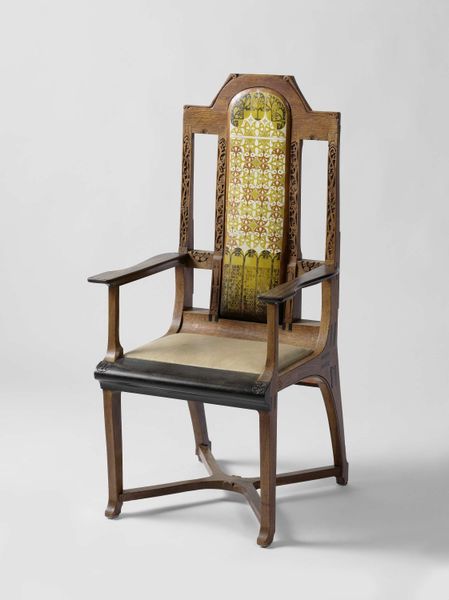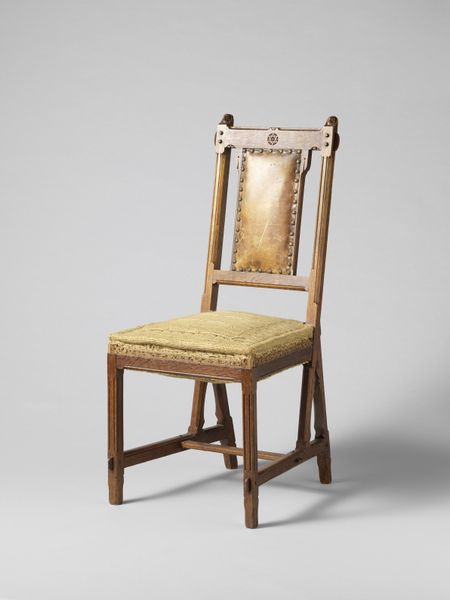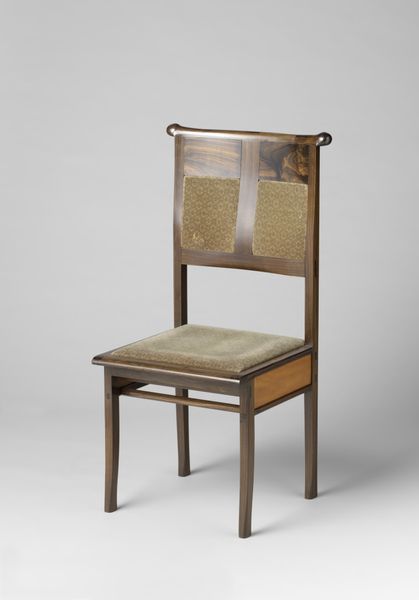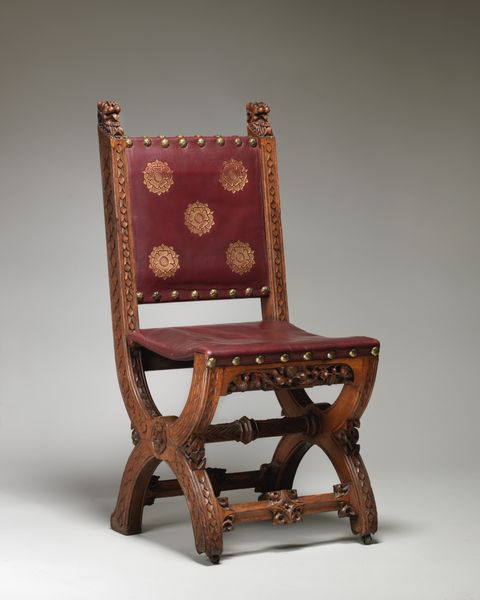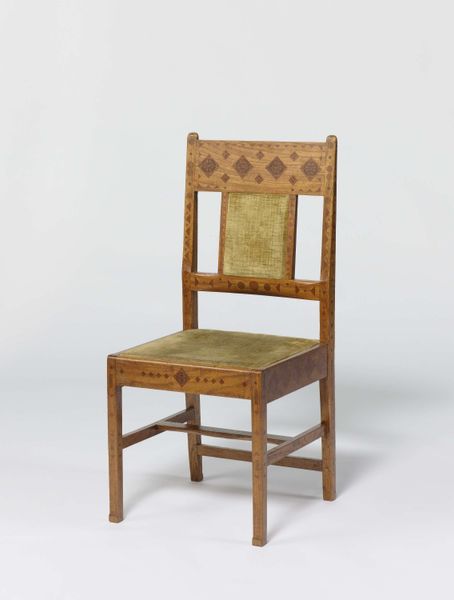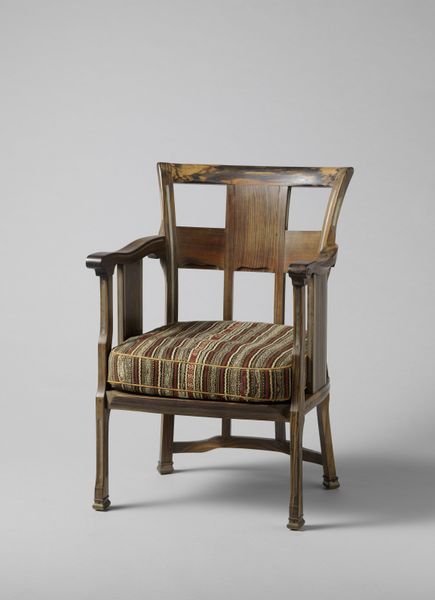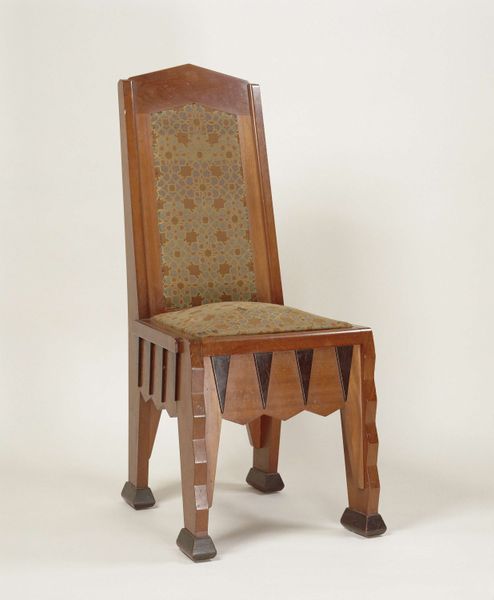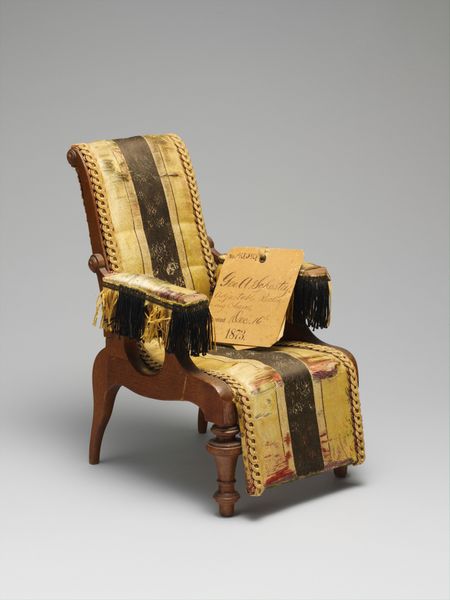
textile, wood
#
arts-&-crafts-movement
#
furniture
#
textile
#
wood
#
decorative-art
Dimensions: height 111.5 cm, width 70.0 cm, depth 83.0 cm, weight 15.6 kg
Copyright: Rijks Museum: Open Domain
Editor: This "Armstoel," made around 1902 by Carel Adolph Lion Cachet and currently residing at the Rijksmuseum, immediately strikes me with its interesting texture contrasts - wood against patterned textile. How would you interpret its statement as a material object? Curator: I’m drawn to the parchment. Note how the batiking technique, typically applied to textiles, is used here on treated animal skin. This challenges hierarchies of material value and artisanal labor that were prevalent then. How might its creation comment on the rising industrialization? Editor: You're right. The batiked parchment brings craft to what could be a mass-producible furniture form. The choice of batik—a laborious, handmade process—feels deliberate. Do you see this choice reflecting back to production contexts of arts and crafts objects at the time? Curator: Precisely! The Arts and Crafts movement was reacting against the perceived soullessness of industrial production, and Cachet's focus on meticulous craftsmanship underscores that ideology. Look at the details, how they serve form but are individually crafted to enrich a functional item. What does the joinery tell you? Editor: The visible joinery celebrates, rather than conceals, the process of construction. It declares the chair as built, rather than appearing as if it just emerged from a factory. It is almost performative, calling attention to material process... Curator: Precisely! Every aspect speaks to this elevated view of production. Ultimately, this isn't simply a chair, but a manifesto declared through wood and decorated skin. Editor: Seeing how Cachet’s emphasis on materials speaks to contemporary industrial sentiments reframes my understanding of what this chair really represents! Thanks. Curator: Agreed, I will look differently at batik application now. Thanks to you.
Comments
No comments
Be the first to comment and join the conversation on the ultimate creative platform.
